
We are living in a world where development is most important thing. Everyone want to develop their skills and improve their knowledge. In IT sectors we have many development ideas and many software are developing day by day. The most common things in that software is Data Structures and Algorithms. Without knowing these factors no one can improve their software and product. In this Tutorials we are going to know what is data structures, why to choose them, and where to apply which algorithms. So you are thinking that why we have to learn this concept, because to create software applications and software development that requires the use of data structures and algorithms. Whether we create an application on the Web. Lets start the Tutorials by understanding What is Data Structure.
What is Data Structure?
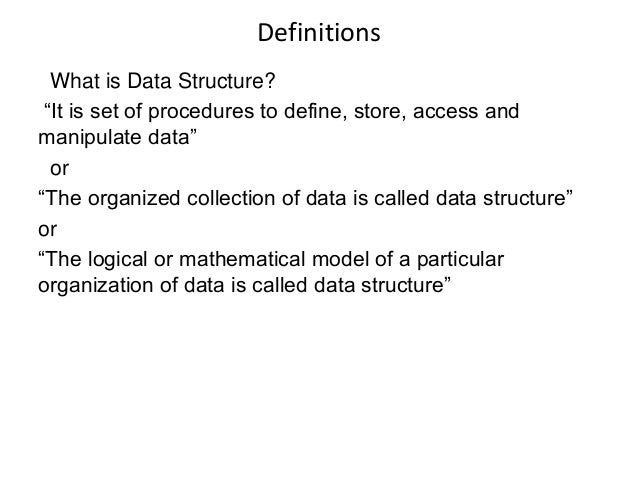
A data structure is a specific format for storing, organizing, and processing data. There are a variety of simple and complex data structures available, all of which are designed to organize data for a specific purpose. Data structures make it simple for people to find and deal with the information they need. Most crucially, data structures define how information is organized so that machines and people can communicate it better.
Now the most common Question comes in everyone’s mind that Why Data Structure is Important? So, there are many factors where we can say Data Structure is Important. I m explaining this in follow.
Why Data Structure is Important?
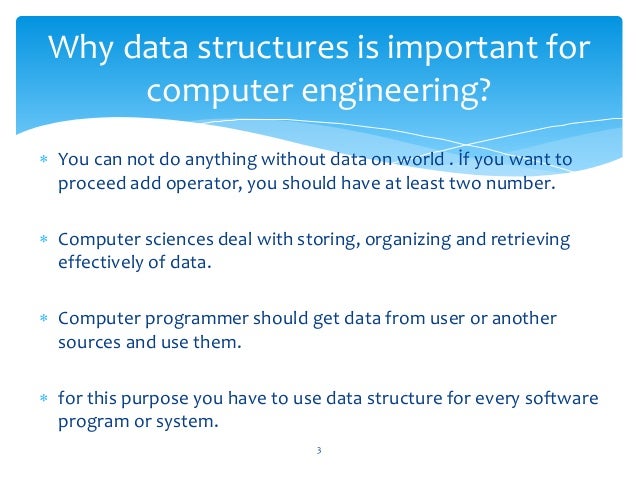
There are many Data types which are present in Data Structures which we use to create software applications and software development. Most computer programming languages’ built-in data types, such as integers and floating-point values, are insufficient to represent the logical purpose for data processing and usage. Applications that consume, alter, and output data, on the other hand, must understand how data should be arranged in order to make processing easier. Data structures connect data pieces in a logical fashion, allowing for more efficient data usage, persistence, and sharing. They give a formal model that explains the organization of data items.
Every special computer program is based on data structures. It’s impossible to write an efficient software without the correct data structure in place. Data is essential to computer programmes, and there is a lot of it. If you want to develop a program that performs properly, you need to make sure the data structure is correct. The correct data structures logically arrange a variety of data kinds so that they may be conveniently accessed, changed, and customized.
There are many factors to consider when picking a data structure such as:
- What type of data is to be stored?
- How is the information going to be used?
- Where should the data be maintained or maintained once it has been created?
- How can the data be arranged best?
- How should the management of storage and memory reservations be looked at?
Now you are thinking that what are the easiest way to understand the Data Structure. So, starting with what are the easiest way to understand the Data structure with the help of following examples
What are the easiest way to understand Data Structure?
Let’s understand Data structure with the help of real Life Examples:-
Example 1:- Take a example of Dictionary, Words are arranged alphabetically in a dictionary. You can quickly and efficiently search and discover a term.
Example 2:- Let’s take second example of a City Map. The City map features scales and directions, which is organized in geometrical way and allows you to efficiently search for a place you wanted. You may also determine a path from location to location with a city map.
Example 3:- And the Third example A business cash-in-cash-out statement. Much as certain data structures, it is straightforward to aggregate and extract data in orderly columns.
There are many Real Life Examples which are present everywhere. The most important thing is to understand the Data Structure which is used in that particular program. Let’s move on the next thing How Data Structure is Used?
How Data Structure is Used?
The physical forms of abstract data types are generally employed by data structures. In building effective software, data structures are an essential component. They also play a key part in the creation of algorithms and their application in computer programmes.
The programmers can specify their data structures early-schedule — such as Fortran, C and C++-. Today a wise collection of integrated data structures organizing code and information is included in many programming languages. For example, Python’s dictionaries and arrays and objects are commonly used for coding information storage and retrieval.
Software architects use algorithms closely linked to data structures — lists, queues and mappings of values from one set to another. This methodology may be used in several applications, including the management of record collections inside a relation database and the creation of an index of such records using a data structure known as a binary tree.
The following are some examples of how data structures are used:-
- Storing data:- For effective data persistence, data structures are used, for example the collection of characteristics and the matching structures used for storing records in the database management system.
- Managing resources and services:- The core operating system (OS) and services are enabled by using data structures such as memory allocation link lists, file directory management and file structure trees as well as process scheduling queues. Core operating system resources and services are available through.
- Data exchange:- Data structures describe information exchanged across programmes, including TCP/IP packets, organization.
- Ordering and sorting:- Data structures such as binary search trees – commonly referred to as an ordered or sorted binary tree – provide efficient sorting methods such as tags for items. Programmers can handle objects ordered according to a certain priority with data structures such as priorities queues.
- Indexing:- In order to index items, such those stored in a database, even advanced data structures like B-trees are needed.
- Searching:- Even complex data structures like B-trees are needed to index objects contained in a database.
- Scalability:- Big data applications employ the data structures for the distributed storage locations allocation and management, to make sure the data is scalable and efficient. Some large-scale data programmes, such as Apache Spark, provide data structures that reflect the underlying database record structure to facilitate queries.
What are the Characteristics of data structures:-
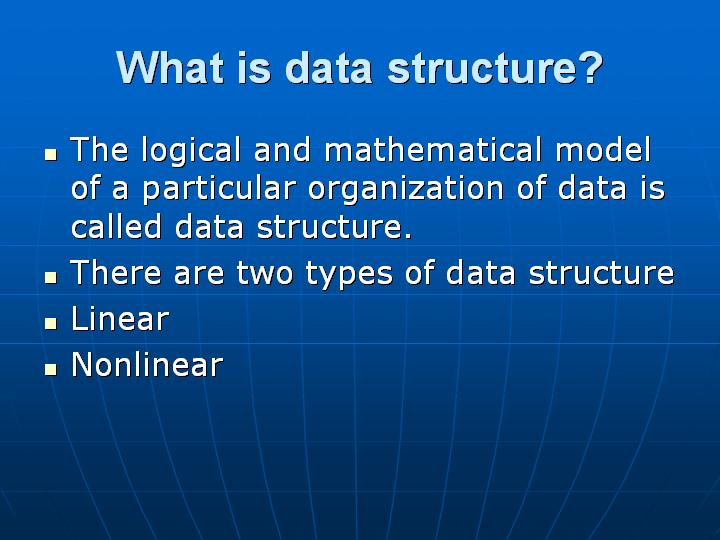
Often data structures have their properties classified. Examples include the following three features:
- Linear or non-linear:- This feature specifies the arrangement of data objects, as in an array or a non-ordered sequence such as the graph, in a sequential order.
- Homogeneous or heterogeneous:- This feature defines whether all data elements in a certain repository are of the same type. One example is a collection of elements in a table, or of different kinds, for instance an abstract kind of data specified as structure in C or a class in Java.
- Static or dynamic:- This feature specifies the compilation of the data structures. At compile time, the structures of static data have fixed sizes, structures and memories. Dynamic data structures include size, structure and memory locations which, depending on the application, can shrink or increase.
What are the different data structures?
Depending on the data type and what you want to perform, data must be arranged in different ways. You must grasp the many kinds of data structures and how they function in order to arrange data properly and develop a program. Data structures are frequently divided into linear data structures and non-linear data structures in a general sense. Some of the primary data structure kinds are as follows:

Linear Data Structures:-
- Arrays:- A set of things is stored in other memory sites. The same kind of items are kept together to compute or readily get the location of every element by index. Fixed or flexible arrays can be used in length.
- Stacks:- In the linear sequence, a stack stores a group of elements. Last in, first out (LIFO) or first in, first out (FIFO).
- Queues:- A queue keeps the collection of objects like a stack, but only first in, first out.
- Linked Lists:- A linked list stores a linear order of objects. The link list includes a data item as well as a reference or link to the next item in the list in each element or node.
- Hash Tables:- A hash table, also known as a hash map, contains an associative array of objects that record the keys. A hash table employs a hash algorithm to transform an index to a bucket array that contains the data item you want.
Non-linear data structures:-
- Trees:- A tree keeps an abstract, hierarchical collection of objects. Each node has a key-value associated with parent nodes associated with child nodes — or subnodes. There is a root node, the ancestor of every tree node.
- Graphs:- A diagram stores a non-linear collection of elements. The graphs consist of a finite collection of nodes, also known as vertices and lines, also known as edges, which link them. These are useful to portray systems like computer networks in the actual world.
- Tries:- A trial is also known as a keyword tree and is a data structure that holds strings in a visual graph like data objects.
What is Arrays?

Arrays are the most basic and essential structure of data. It’s best to know how to create arrays if you wish to construct additional structures such as queues, stacks or hash-tables. A table is a set of related data, which is clearly stored in a memory area together. A positive value is provided for every item of data in an array. That’s what the index is named. Index numbers allow you to easily discover each data piece or element’s location by adding a number to a base value. Usually the base value is the memory location of the first element. The initial index of an array is 0 for many computer languages.
What is Stacks?

You can thank the stack data structure if you have ever used the Undo feature on your computer. The Last In First Out (LIFO) mechanism is used by stacks. Image a book stack. The first you may take off is the last one you put up on the stack. You need to remove any book on top to securely remove the underlying book (the first one you have drawn up).
What is Queues?
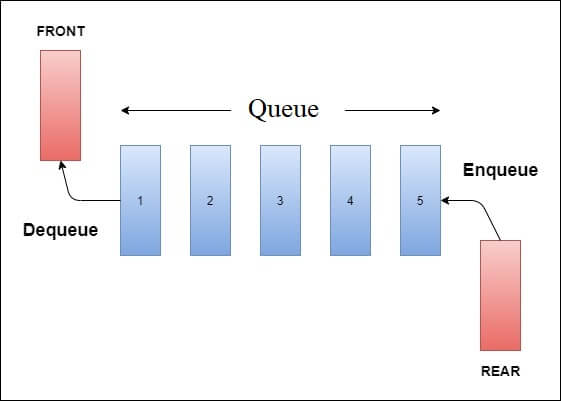
Stacks and queues are the same since they both hold sequentially stored elements. The distinction is that the first-out (FIFO) technique is used by the queue in place of the last-out-out-method (FIFO). Take the people in a rollercoaster to comprehend a queue. The first person to leave the line and ride is the first. The first person. The latter person on the line is the latter.
What is Linked Lists?
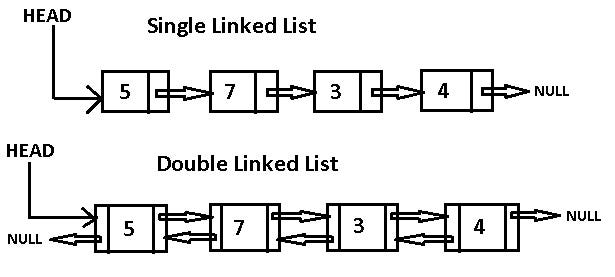
A linked list is a linear data structure like stacks and queues. However, in a number of respects, a linked list is different. The internal structure, the allocation of memory and the method you perform essential tasks are all different. Consider a list of elements connected to each element as a sequence to the next element. The data and pointers of each node are included.
The lists linked may include anything including strings, characters, or numbers. They can be sorted or unclassified. And duplicate elements or all single components might be included there. The items are indexed in an array and you may access an element instantaneously. However, you must start with your head in a linked list and make your way to the required element. Linear time is needed, and it is a little bit slower. The benefit of the linked lists is that at the beginning or very fast entries may be inserted and deleted.
What is Hash Tables?

Hash tables are a structure of information that may be used as a linear or nonlinear data structure. It is often used as a linear data structure. For mapping keys to values, hash tables are utilised. For instance, if you have a list of names, you may use a hash table to associate a phone number with a name of a person. Hash tables are often constructed with arrays.
What is Trees?

Where all linear data structures consist of arrays, stacks, queues and linked lists, a tree is a non-linear hierarchical data structure. Think of it as a firm where root is CEO and initial nodes are department heads. These department managers report to other employees and create more nodes. Trees are built so that each parent-child node relationship has one edge (or link). Only one path from a root to a certain node has to be available.
Trees may be one of the most complicated data structures and are frequently employed in artificial information or other complicated problem solving systems.
There are a wide range of distinct trees, including a binary tree, an AVL tree, a balanced tree, a black red tree, a tree of 2-3 and a N-ary. The most often used binary and binary search tree.
What is Graphs?
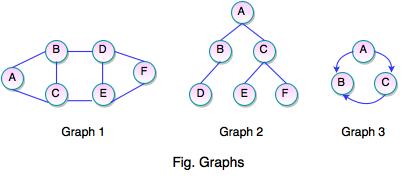
A tree is basically a graph shape. The difference between the graph and the tree is that there are no rules in a graph dictating the connection between the nodes. More like a network, a chart may be observed. Like a graph in mathematics, vertices are part of the coding graph. The nodes can be viewed as points on a diagram but frequently each node is linked to another node and creates a web-like form.
Graph types contain an unspecified graph and a directed diagram. They can be shown using a matrix or an adjacency list.
What is Tries?

A trial is also known as a keyword tree and is a data structure that holds strings in a visual graph like data objects. You saw a trial data structure in operation when you have ever received automatic suggestions when using a search engine. In addressing string issues, trials are beneficial. Tries are also referred to as prefix trees, as they are lengthy route prefixes.
Conclusion
Data structures may grow unbelievably complicated, as you can see. We’ve only covered the Introduction part. There are a lots of applications and uses in each data structure. That stated, a key initial step to being a skilled programmer would be a key knowledge of data structures. Once you know about data structures, learning multiple programming languages will be easier as you have a solid basic foundation from which to develop. That is why it is the first step to grasp the most popular data structures or how they function, whether you are building data structures in Java or Python, or reviewing interview questions. Hope all these all the Topics which I have mentioned is clear to you and helpful to you. Thank you.
- Degree Pursuit: Navigating the Path to Educational Excellence - July 4, 2024
- Why Is Studying English Important in a Business Environment? - July 4, 2024
- Top 10 Data Science Skills You Need in 2024 - July 3, 2024

